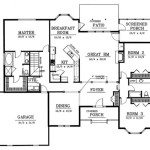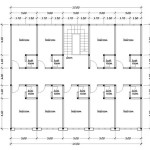Essential Aspects of Roman Courtyard House Plans
Roman courtyard houses, known as domus, played a central role in ancient Roman society and architecture. These elegant and functional homes evolved over centuries, incorporating distinctive features that reflected the Roman lifestyle and culture.
The Central Atrium
The atrium was the heart of the Roman courtyard house. It was an open-air courtyard with a central impluvium, a shallow pool that collected rainwater. The roof of the atrium sloped inwards, channeling rainwater into the impluvium. The atrium provided light and ventilation to the surrounding rooms and served as a social gathering space.
The Tablinum
Adjacent to the atrium was the tablinum, a semi-public room used for receiving guests and conducting business. It was often decorated with artwork and sculptures and provided access to the rest of the house.
The Peristyle
The peristyle was a second courtyard, usually larger and more elaborate than the atrium. It was surrounded by covered walkways supported by columns. The peristyle provided additional living space, shade, and a more private setting for outdoor activities.
The Cubicula
Cubicula were the private bedrooms of the household. They were typically small and sparsely furnished, with a bed and a few pieces of furniture. The cubicula were located around the atrium and peristyle.
The Triclinium
The triclinium was the dining room, where the Romans held lavish banquets. It was usually a large and ornate room with a marble-topped table and elaborate wall paintings. The triclinium was a place for socializing and entertainment.
The Kitchen and Baths
The kitchen was located in the rear of the house and was typically small and utilitarian. It had a hearth, a stove, and storage space for food. The baths were also located in the rear and consisted of a series of rooms with hot, warm, and cold baths. The baths were a place of relaxation and socialization.
Exterior Features
Roman courtyard houses often had a grand entrance, with a large door flanked by columns. The exterior walls were typically made of brick or stone and decorated with stucco or frescoes. The roofs were made of tiles.
Cultural Significance
Roman courtyard houses were not merely physical structures but symbols of wealth and status. They reflected the Roman values of hospitality, privacy, and family life. The domus served as a place for social gatherings, entertaining guests, and conducting business. It was also a place of refuge and relaxation.
The design of Roman courtyard houses influenced architecture throughout the ancient world and continues to inspire modern-day homes. Their elegant and functional features provide timeless inspiration for creating comfortable and stylish living spaces.

Plan Of A Pompeian House Roman Courtyard Plans Villa

Roman Domestic Architecture Domus Article Khan Academy

Courtyard House Plans Family Roman

A Atrium Of Roman House E Central Hall With Roof Opening At The Scientific Diagram

28 Floor Plans Roman Courtyard Ideas How To Plan House

Image Result For Roman Courtyard House Ancient Houses Architecture

Ancient Roman Home A Wealthy Citizen House Houses Architecture

Residential Architecture Chapter 5 Roman And Urbanism

Plan Of A Spanish Courtyard House Italica Scientific Diagram

6 Typical Courtyard Dwellings During Classical Civilization Scientific Diagram








